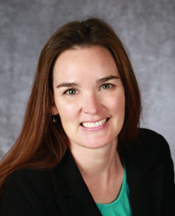Ann Anderson
5th Grade Science
Belle Fourche School District

Ann Anderson teaches 5th grade science at Belle Fourche Middle School. She has been a teacher for 26 years.
What made you decide to become a teacher?
I couldn’t figure out what I wanted to do. Both my parents are teachers, my uncle and other family members are as well. I was in college, I decided to just try teaching because I didn’t know what else to do. It was what I grew up with, it’s what I knew.
And I never left.
What’s the best part of teaching?
The kids. In the morning, when kids are going to their classes, and kids from other grades come down and ask what we’re doing, and they say how they remember this or that thing in my class.
The students who come back and remember and share what they thought was really fun.
What’s the most challenging part of teaching?
Hoping that what you taught them stays with them and they remember it. That end of the year thing, where you hope they remember you, because you know you’re going to remember them.
What’s the typical 5th grader like?
They’re energetic, and they’re so excited about science. They have that curiosity still. They want to be a part of it, to be involved in everything. Sometimes they’re a little moody, but you can always draw out a smile.
They’re so funny – they’re excited and funny and personable. They want to share things. You do have your shy and quiet fifth graders, and they want to please and they do so well too – all of their personalities are so fun to be around.
What’s the most useful advice you can give to a new teacher who’s just starting out?
Don’t sweat the small stuff. I used to be so uptight. Everything had to be done. To be honest, I do so much better when I can relax and let things be.
Another thing I would say is that you never know what’s going on in someone else’s life. We have students that come from so many different backgrounds. When they’re here, they’re my concern, my focus. When they’re in my classroom, we’re going to learn, they’re a part of my team, and I’m going to take care of them.
It’s important to remember to have compassion and understanding -- they may have bigger things going on than the size of Saturn. We focus on learning, and fun, and we get things done.
Do you have any favorite experiments or projects you like to do with students?
Before we begin our Mount St. Helens unit, we study maps of volcanoes, earthquakes, the ocean floor, and geology. The students study maps to become volcanologists, seismologists, geochronologists, and geologists. Then, we hold a “scientific conference,” where students share their expertise and observations from their specific map with other students who have the other three maps. The students collaborate to create a new map that documents activity from each of the four fields of study. They end up creating plate boundaries using evidence and data.
This work from the students leads to lessons where I use the eruption of Mount St. Helens to teach how the different spheres of the earth – atmosphere, geosphere, hydrosphere, and biosphere – interact with each other. Students act as air traffic controllers, where they decide when to ground their planes so that they don’t encounter the ash in the air and have their engines stall out. In another lesson, students map the path of the mudflow to see how the existing rivers were widened and changed because of the eruption.
